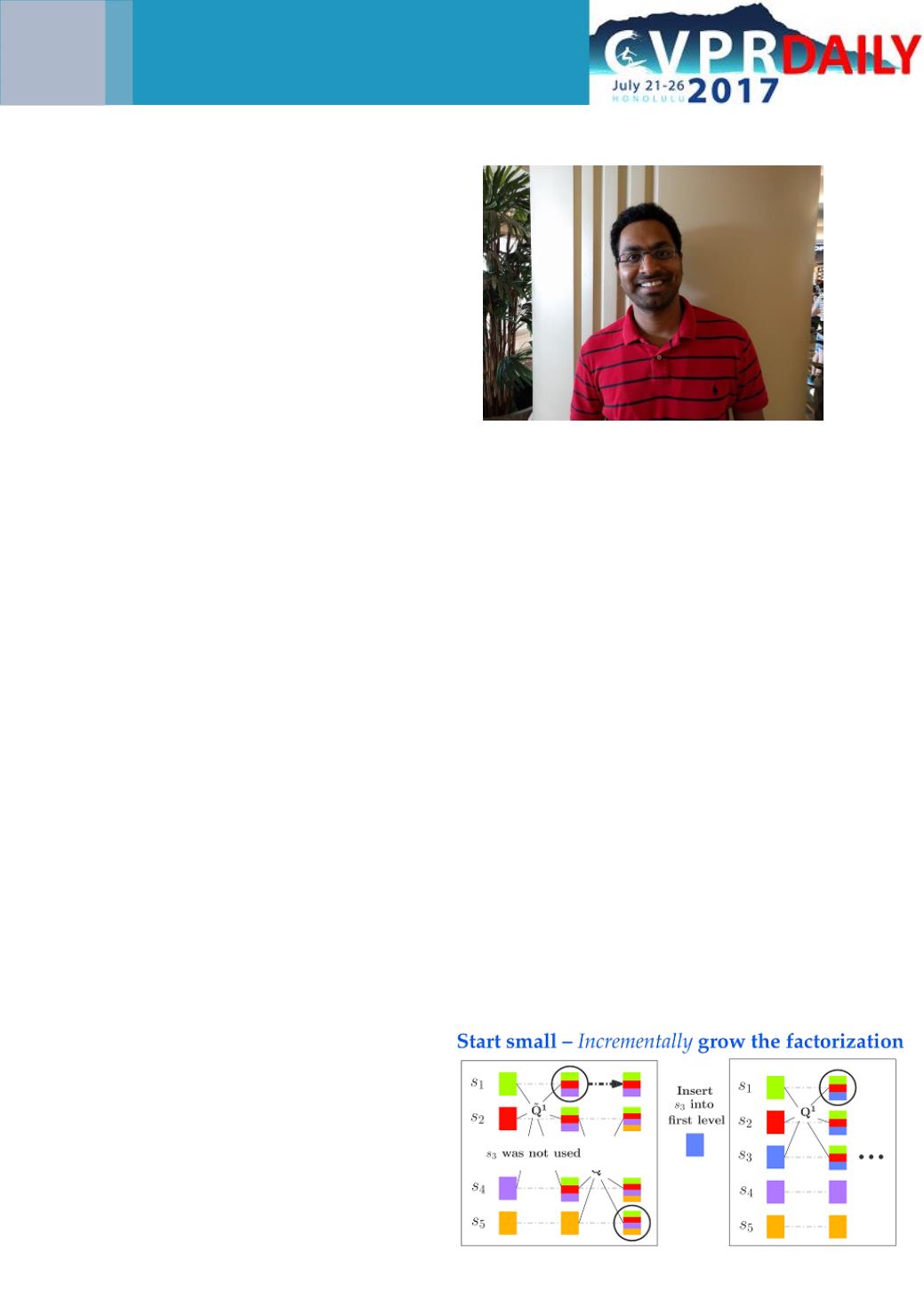

Vamsi told us that the motivation and
the context of his current work started
with the success of deep learning. He
describes deep learning as “a beast
which needs to be tamed”. That is, we
need machine learning and computer
vision tools which can decode the
learned deep neural networks. “There
is a lot of software which you can use
to train a good networks, but we also
need to understand what the deep
representations really mean, and their
relationship to human semantics”,
Vamsi said. His work contributes to
taking first steps towards that goal. It is
asking: given a trained network, what
interesting deep representations did
this network learn? Do the deep
networks see what humans see with
respect to different categories? Vamsi
and his co-author’s approach to
answering these questions is to take
symmetric matrices from deep
network representations,
and
factorising the complex hierarchical
block structure in this data. The
existing tools for this, like PCA, use
low-rank and global methods and are
not adequate, Vamsi told us. Therefore
he proposes a novel factorisation,
which he calls
incremental
multiresolution matrix factorisation.
This is the first Mallat-style wavelet on
symmetric matrices.
Constructing
wavelets on matrices themselves,
instead of non-euclidean data like
grass and trees, is a relatively new
development, Vamsi told us. They
visualise the factorisation that this
method produces in a nice way, which
they called MMF graph.
If you want to learn more about
Vamsi’s work and see examples of
these visualisations, visit his talk titled
"
Decoding Deep Networks
" at the
Explainable Computer Vision workshop
on Wednesday, July 26. He will talk
about how to use the factorisations
they propose in their paper to study
deep neural
networks and the
evolution of semantics in a neural
network, and how these compare to
human semantics.
Vamsi Ithapu
26
TuesdayThe Incremental Multiresolution Matrix Factorization Algorithm
Vamsi Ithapu
is a PhD student at the
University of Wisconsin Madison
, and
he is working on explainability of deep
neural networks. His current work is a
joint work with
Risi Kondor
,
Sterling C
Johnson
and
Vikas Singh
.
















